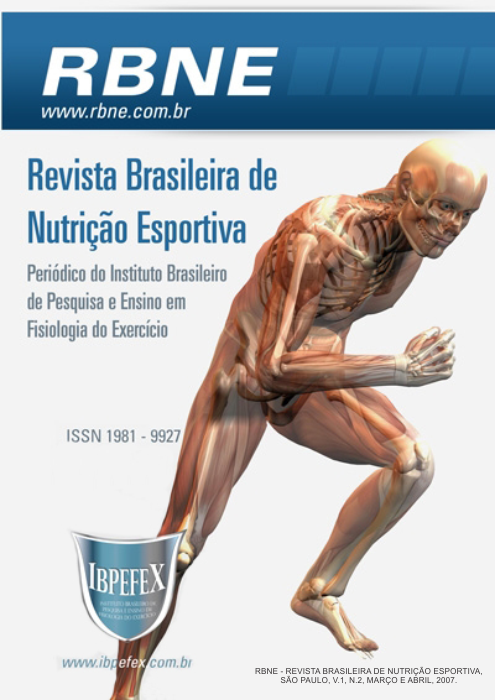Profile of the standard of the ingestion of liquids and verification of the adequacy of the level of hydration in practitioners of spinning classes in two gyms of Rio de Janeiro
Abstract
Considering that the Spinning class is an aerobic activity with stimulations that vary from moderate to high intensity with duration of 50 minutes and sometimes it is carried through in rooms without adjusted ventilation system, this study intends to evaluate the standard ingestion of liquids and the profile of the level of hydration in practitioners of this special activity through the body weight, and by an interview that evaluates the degree of knowledge of these practitioners about the subject. A total of 17 practitioners of spinning classes were evaluated in two gyms of Rio de Janeiro. Gym M (n=8) has air conditioner system and Gym D (n=9) does not have it. Through the applied questionnaire, it was noticed that in both the gyms, the people that hydrated before and during the classes knew about the importance of the hydration to restore liquids and electrolytes and to improve performance. The results showed that in Gym D, the tested people had a greater loss of water, possibly due to the absence of a proper ventilation system, which facilitates the evaporation of sweat. It was observed that one of the practitioners presented a loss of 1.45% of body weight, what can represent a decrease in performance. Both gyms presented an increase in body weight, possibly due to the fact that in both places, the people hydrated well before and during the class. Also, the study was limited, since there was no control in emptying the bladder before the person was weighted or a measurement of the amount of liquid ingested. One suggests that in a next study should be verified: the room temperature, the humidity, measurement of water intake before and during the activity, and the bladder emptying control.
References
Carvalho, T.; Rodrigues, T.; Meyer, F.; Lancha Junior, A.H.; Rose, E.H. Modificações dietéticas, reposição hídrica, suplementos alimentares e drogas: comprovação de ação ergogênica e potenciais riscos para a saúde. Revista Brasileira de Medicina Esportiva, vol. 9, n. 2- mar/abr, 2003.
Gatorade Sports Science Institute. Recomendações para minimizar o risco de problemas relacionados ao calor durante a atividade física. 1999.
Marquezi, M.L.; Lancha Júnior, A.H. Estratégias de Reposição Hídrica: Revisão e Recomendações Aplicadas. Revista Paulista de Educação Física de São Paulo, 12(2): 219-227, jul/dez,1998.
Montain, S.J.; Coyle, E.F. Fluid ingestion during exercise increases skin blood flow independent of increases in blood volume. J. Appl. Physiol., 793:903, 1992.
Opplinger, R.A.; Bartok, C. Hydration Testing of Athletes. Sports Medicine, 2002, 32 (15): 959-971.
Posição do American College of Sports Medicine: Exercício e Reposição de Líquido. In: Williams M H, eds. Nutrição para saúde, condicionamento físico e desempenho esportivo. São Paulo: Manole, 2002: 471-475.
Rolls, B.J.; e colaboradores. Thirst following water deprivation in humans. Am. J. Physiol., 239 (regulatory Integrative Comp. Physiol. 8: 476. 1980.
Authors who publish in this journal agree to the following terms:
- Authors retain the copyright and grant the journal the right of first publication, with work simultaneously licensed under the Creative Commons Attribution License BY-NC which allows the sharing of the work with acknowledgment of the authorship of the work and initial publication in this journal.
- Authors are authorized to enter into additional contracts separately for non-exclusive distribution of the version of the work published in this journal (eg, publishing in institutional repository or book chapter), with acknowledgment of authorship and initial publication in this journal.
- Authors are allowed and encouraged to post and distribute their work online (eg, in institutional repositories or on their personal page) at any point before or during the editorial process, as this can bring about productive change as well as increase impact and impact. citation of published work (See The Effect of Free Access).






